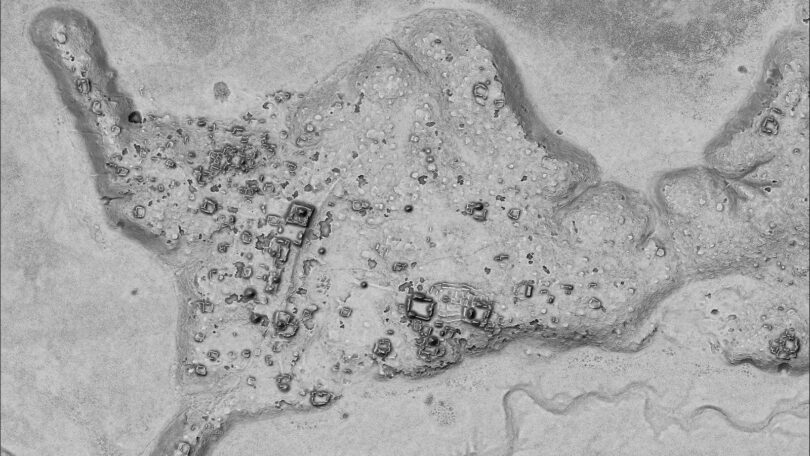Eliot Stein
Archaeologist Ivan Šprajc has spent nearly 30 years uncovering long-lost cities buried deep in Mexico’s Yucatán Peninsula. His latest discovery is capturing the world’s attention.
“You need to be a little crazy for this work,” said Dr Ivan Šprajc, taking a drag of his cigarette and staring at me with ice-blue eyes. “You have to be careful about the snakes, insects, jaguars and everything else. But there is something pushing us. You have to suffer a little if you want to find something that few people have ever seen that was hidden for so many centuries.”
Once described by The Guardian as “the real-life Indiana Jones”, Šprajc has spent nearly 30 years hacking his way through the remote tangles of Mexico’s Yucatán Peninsula to find long-lost Maya cities buried deep in the jungle.
In 2013, the Slovenian archaeologist and his team unearthed a previously unknown 40,000-person city dating to the 8th Century that had been swallowed by the rainforest called Chactún. A year later, they located two more Maya cities – Lagunita and Tamchén – which each featured pyramid temples, plazas and intricately carved stele that seemed to have been mysteriously abandoned around 1,200 years ago.
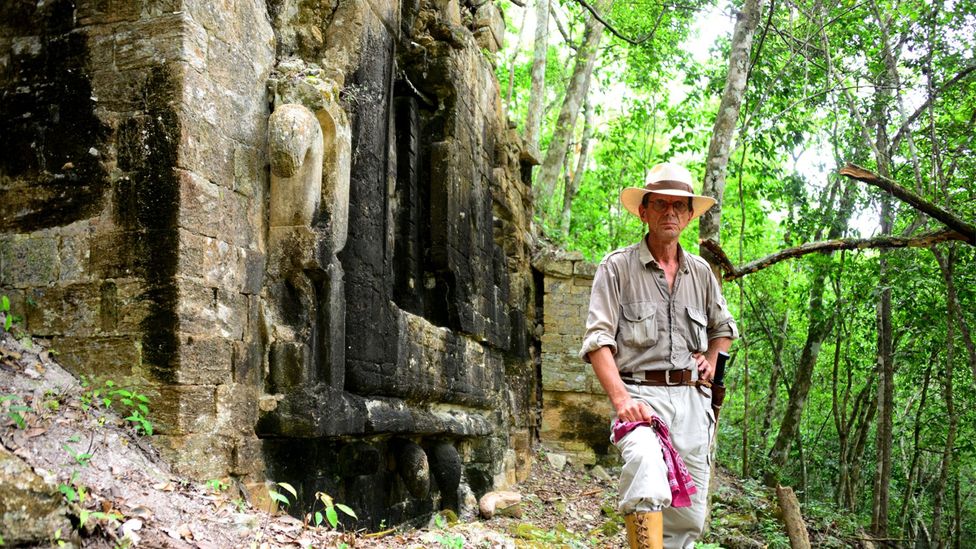
In 2014, Šprajc and his team unearthed Lagunita, an ancient Maya city dating to the 8th Century (Credit: Mauricio Marat, INAH, Mexico)
Yet, it is Šprajc’s latest discovery that is now drawing worldwide attention.
Late last month, the archaeologist and his team located the remains of an ancient, abandoned Maya city home to numerous pyramid-shaped structures rising more than 15m nestled deep within Mexico’s Balamkú Ecological Conservation Zone. He named the site Ocomtún (“stone column” in Yucatec Mayan) after the many cylindrical columns also scattered throughout the settlement. Pottery examined from the site indicates it was likely inhabited between 600 and 800 CE.
“These cities had been lost to time. Nobody knew exactly where they were” Šprajc told BBC Travel in his first interview since Ocomtún’s discovery. “But this [Ocomtún], was actually the last major black hole on the archaeological map of the central Maya Lowlands (the modern-day central Yucatán Peninsula). Nothing was there. There was not a single known site in an area stretching some 3,000-4,000 sq km.”
Mapping this previously uncharted black hole could shed more light on who the Maya were, and what may have led to their dramatic collapse.
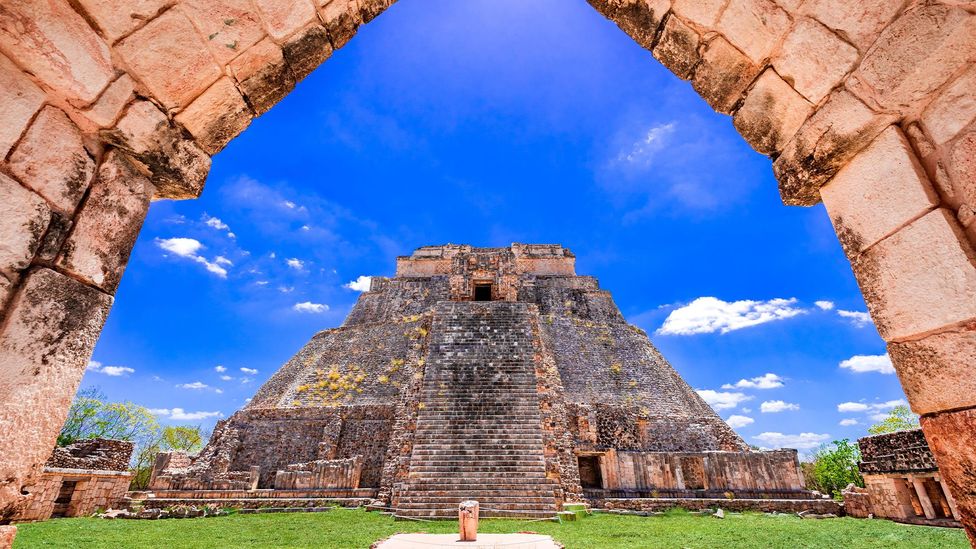
The Maya carved more than 40 grand cities out of stone and ruled much of Central America (Credit: Alpineguide/Alamy)
The great Maya mystery
Commonly considered one of the greatest civilisations in the Western Hemisphere, the Maya ruled over much of Central America during their peak between 200-900 CE. Perhaps best known for their towering pyramid temples and more than 40 grand cities carved out of stone – such as Tikal, Uaxactún and Copán – the Maya were also obsessive astronomers, brilliant mathematicians and prolific scribes.
They kept detailed records of eclipses and solstices and aligned their cities’ most important structures to the celestial movements. They invented the concept of zero roughly 1,000 years before Europeans and developed a calendar in the 1st Century BCE that was more accurate than the Julian calendar used across the UK, Europe and Asia for the next 1,700-2,000 years. They were one of the world’s earliest civilisations to devise a system of writing (as early as 300 BCE) and went on to create thousands of paper books. They likely invented chocolate, the world’s first ball game and rubber.
“There has always been a fascination around the Maya,” Šprajc said. “Most of these wonderful cities have been found deep in the forest, so it has kind of been an enigma: how can a civilisation emerge and flourish in a tropical environment?”
But despite more than a century of scholarly investigations into who the Maya were, one central question remains: what happened to their great cities?
In the 8th and 9th Centuries, the Maya started suddenly abandoning their cities and these once-great Mesoamerican metropolises constructed using highly sophisticated science and engineering techniques mysteriously fell apart. Šprajc and others have long pondered whether this was due to warfare, prolonged droughts, soil depletion, climactic change or a combination of factors, but by roughly 1,000 CE, Šprajc explained that almost every settlement in the central and southern Yucatán Peninsula – including Ocomtún – was abandoned.
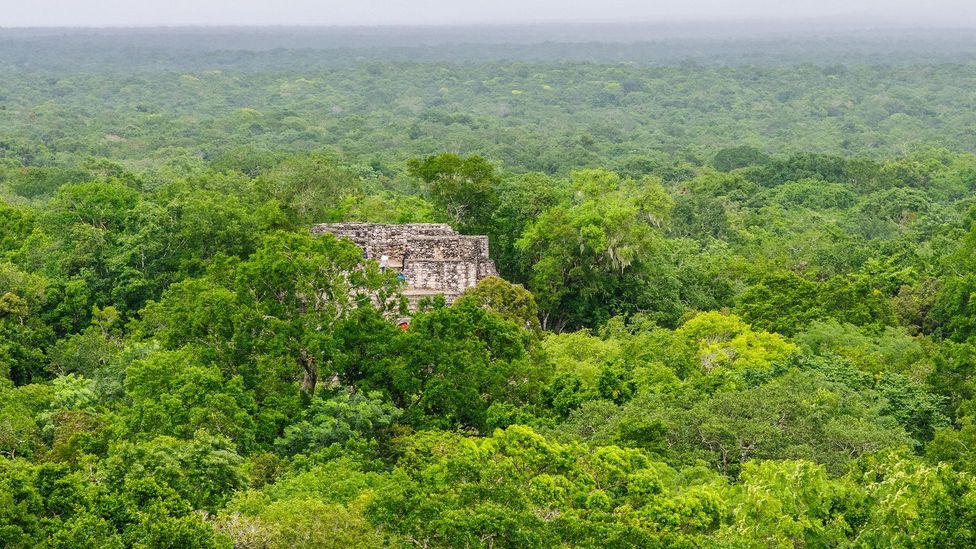
The Calakmul Biosphere Reserve is one of the most biodiverse places on Earth and gets its name from the lost Maya city of Calakmul (Credit: Julien Cruciani/Alamy)
Why Ocomtún matters
The rediscovery of any new lost Maya city holds valuable clues about how Maya people lived and what caused the civilisation’s sudden downfall some 1,200 years ago – and this is especially true in an area as little-explored as the central Yucatán Peninsula.
The Balamkú Ecological Conservation Zone is a virtually impenetrable snarl of vines that’s one of the most biodiverse places on Earth. It’s home to 86 species of mammals but virtually no roads, so Šprajc and his team used Lidar – an airborne laser scanning technology that has been transforming how archaeologists conduct research in jungles and uncovering the ancient Maya world – to map the area. After receiving Lidar images showing man-made changes to the landscape, they thrashed their way 60km through a riot of vegetation to reach the site.
“We knew there was something quite important there, but we couldn’t imagine what, exactly, we’d find,” Šprajc said. “When we got there, our suspicions were confirmed: architecturally, it was truly massive. So, it’s clear this must have been a politically important centre.”
Surrounded by extensive wetlands, the city was built on high ground and was comprised of a “monumental nucleus” covering more than 50 hectares. In addition to pyramids and stone columns, the team found altars, three plazas dominated by crumbling buildings and a court for the Maya’s ancient ball game. A sprawling 80m acropolis marks the city’s north-western corner and is topped by another pyramid rising 25m above the natural terrain. A short walk south, there are two more pyramids standing 15m tall.
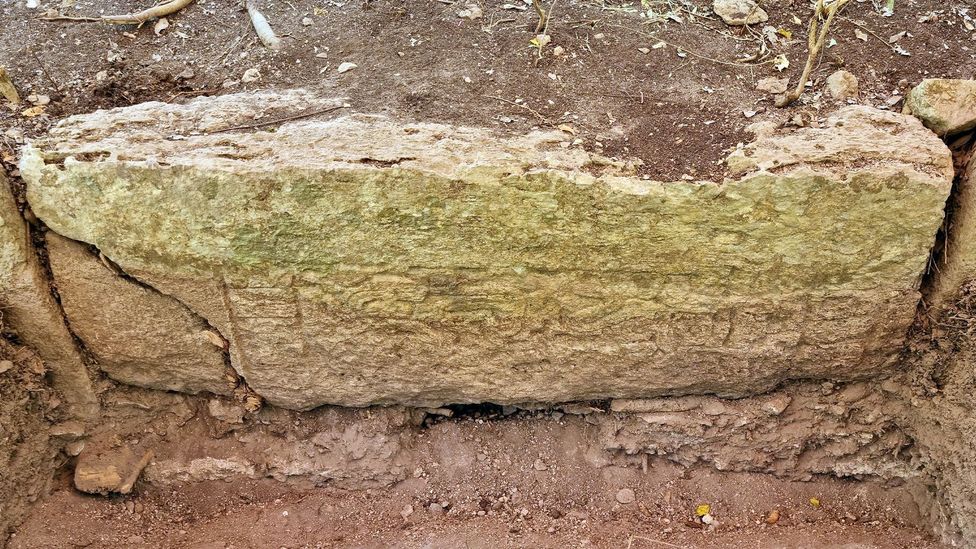
Among pyramids, plazas and stone columns, archaeologists also found detailed relief carvings at Ocomtún (Credit: ZRC SAZU)
“This is a very exciting discovery, to say the least!” said Dr M Kathryn Brown, an anthropology professor at the University of Texas at San Antonio and renowned Maya scholar. “Despite more than 150 years of investigations in the Maya world, this discovery shows the power of Lidar to reveal sites of this size, as well as important details about their layout and urban planning … I believe that Ivan’s research will shed light on important questions related to the rise and fall of the ancient Maya, as well as their daily life.”
Beyond its sheer size, the real value in Ocumtún may lie in what it reveals about when and why Maya communities migrated inland from the coast to settle the interior, and what led them to abandon these settlements, along with so many others. Šprajc noted that even though the city began to wane after about 800 CE, the remaining inhabitants continued to alter and adapt the buildings to their evolving needs – “a reflection of ideological and population changes in times of crisis that, finally, by the 10th Century, led to the collapse of [the Maya’s] complex sociopolitical organisation and to a drastic demographic decline”.
Only time and future funding will tell if Ocumtún will reveal its secrets, but Šprajc is certain of one thing: when the dry season starts next March, he’ll be back in the Yucatán, searching for more clues about a lost civilisation that never truly disappeared.
“Many people would say we’re losing some of the romance of archaeological discovery, but I don’t think so,” he said. “It’s so romantic. It’s heat and hacking through the jungle with machetes and problems with water and then, all of a sudden, there’s a big pyramid or inscribed stele right in front of you. That’s when all those troubles go away.”
Courtesy: BBC

